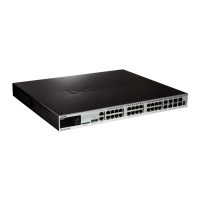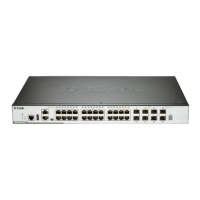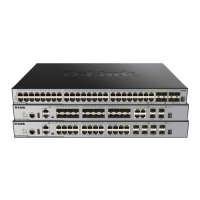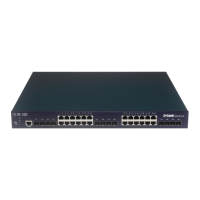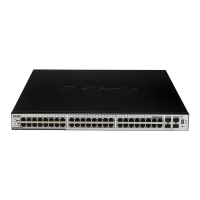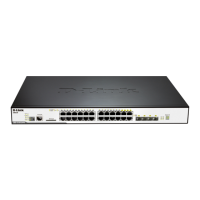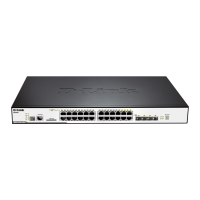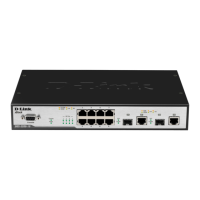xStack
®
DGS-3620 Series Layer 3 Managed Stackable Gigabit Switch Web UI Reference Guide
261
Understanding QoS
The Switch supports 802.1p priority queuing. The Switch has eight priority queues. These priority queues are
numbered from 7 (Class 7) — the highest priority queue — to 0 (Class 0) — the lowest priority queue. The eight
priority tags specified in IEEE 802.1p (p0 to p7) are mapped to the Switch’s priority queues as follows:
• Priority 0 is assigned to the Switch’s Q2 queue.
• Priority 1 is assigned to the Switch’s Q0 queue.
• Priority 2 is assigned to the Switch’s Q1 queue.
• Priority 3 is assigned to the Switch’s Q3 queue.
• Priority 4 is assigned to the Switch’s Q4 queue.
• Priority 5 is assigned to the Switch’s Q5 queue.
• Priority 6 is assigned to the Switch’s Q6 queue.
• Priority 7 is assigned to the Switch’s Q7 queue.
For strict priority-based scheduling, any packets residing in the higher priority classes of service are transmitted first.
Multiple strict priority classes of service are emptied based on their priority tags. Only when these classes are
empty, are packets of lower priority transmitted.
For weighted round-robin queuing, the number of packets sent from each priority queue depends upon the
assigned weight. For a configuration of eight CoS queues, A~H with their respective weight value: 8~1, the packets
are sent in the following sequence: A1, B1, C1, D1, E1, F1, G1, H1, A2, B2, C2, D2, E2, F2, G2, A3, B3, C3, D3,
E3, F3, A4, B4, C4, D4, E4, A5, B5, C5, D5, A6, B6, C6, A7, B7, A8, A1, B1, C1, D1, E1, F1, G1, H1.
For weighted round-robin queuing, if each CoS queue has the same weight value, then each CoS queue has an
equal opportunity to send packets just like round-robin queuing.
For weighted round-robin queuing, if the weight for a CoS is set to 0, then it will continue processing the packets
from this CoS until there are no more packets for this CoS. The other CoS queues that have been given a nonzero
value, and depending upon the weight, will follow a common weighted round-robin scheme.
Remember that the Switch has eight configurable priority queues (and eight Classes of Service) for each port on
the Switch.
802.1p Settings
802.1p Default Priority Settings
The Switch allows the assignment of a default 802.1p priority to each port on the Switch. This page allows the user
to assign a default 802.1p priority to any given port on the switch that will insert the 802.1p priority tag to untagged
packets received. The priority and effective priority tags are numbered from 0, the lowest priority, to 7, the highest
priority. The effective priority indicates the actual priority assigned by RADIUS. If the RADIUS assigned value
exceeds the specified limit, the value will be set at the default priority. For example, if the RADIUS assigns a limit of
8 and the default priority is 0, the effective priority will be 0.
To view the following window, click QoS > 802.1p Settings > 802.1p Default Priority Settings, as show below:
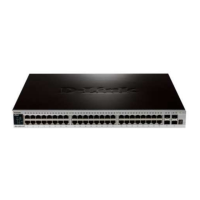
